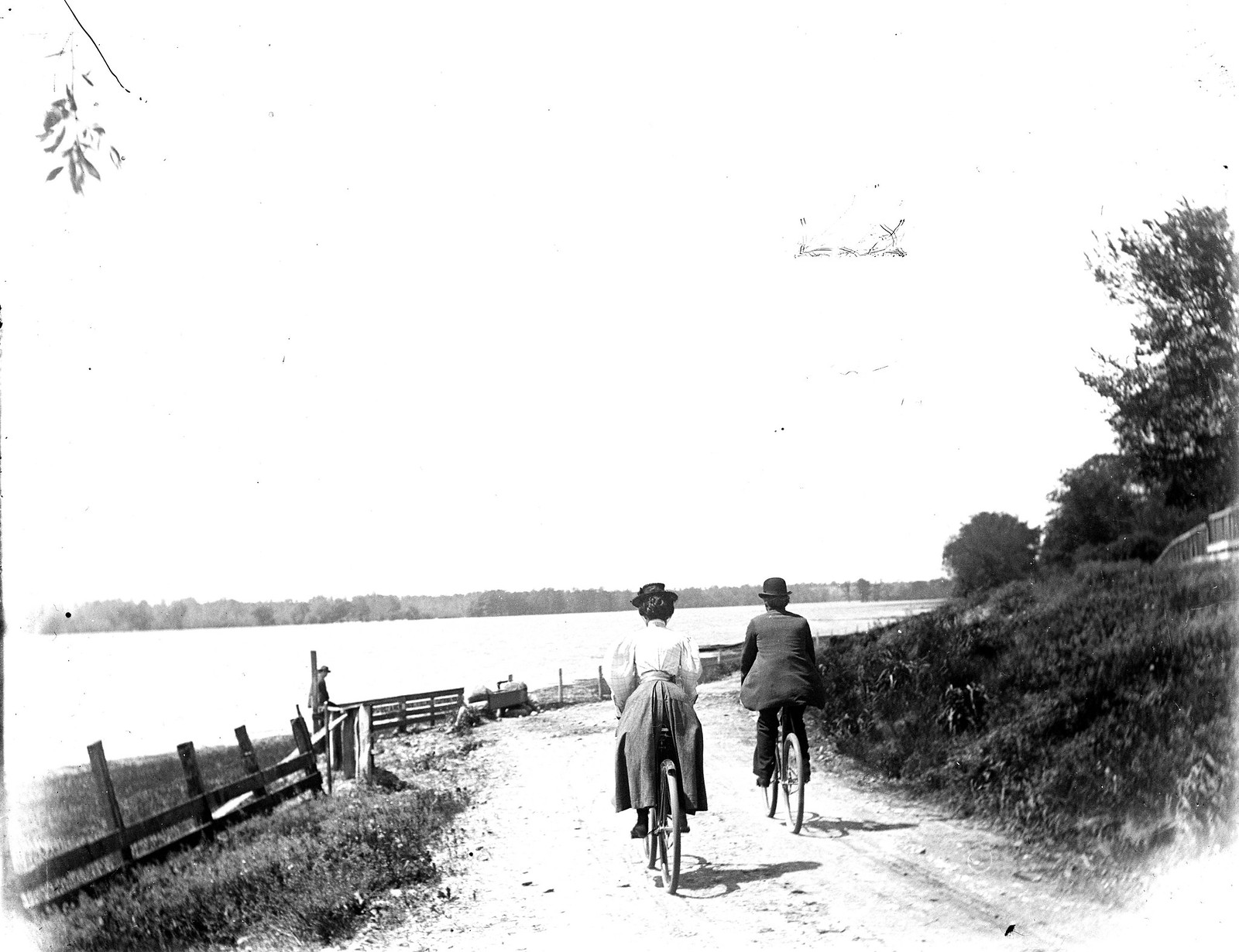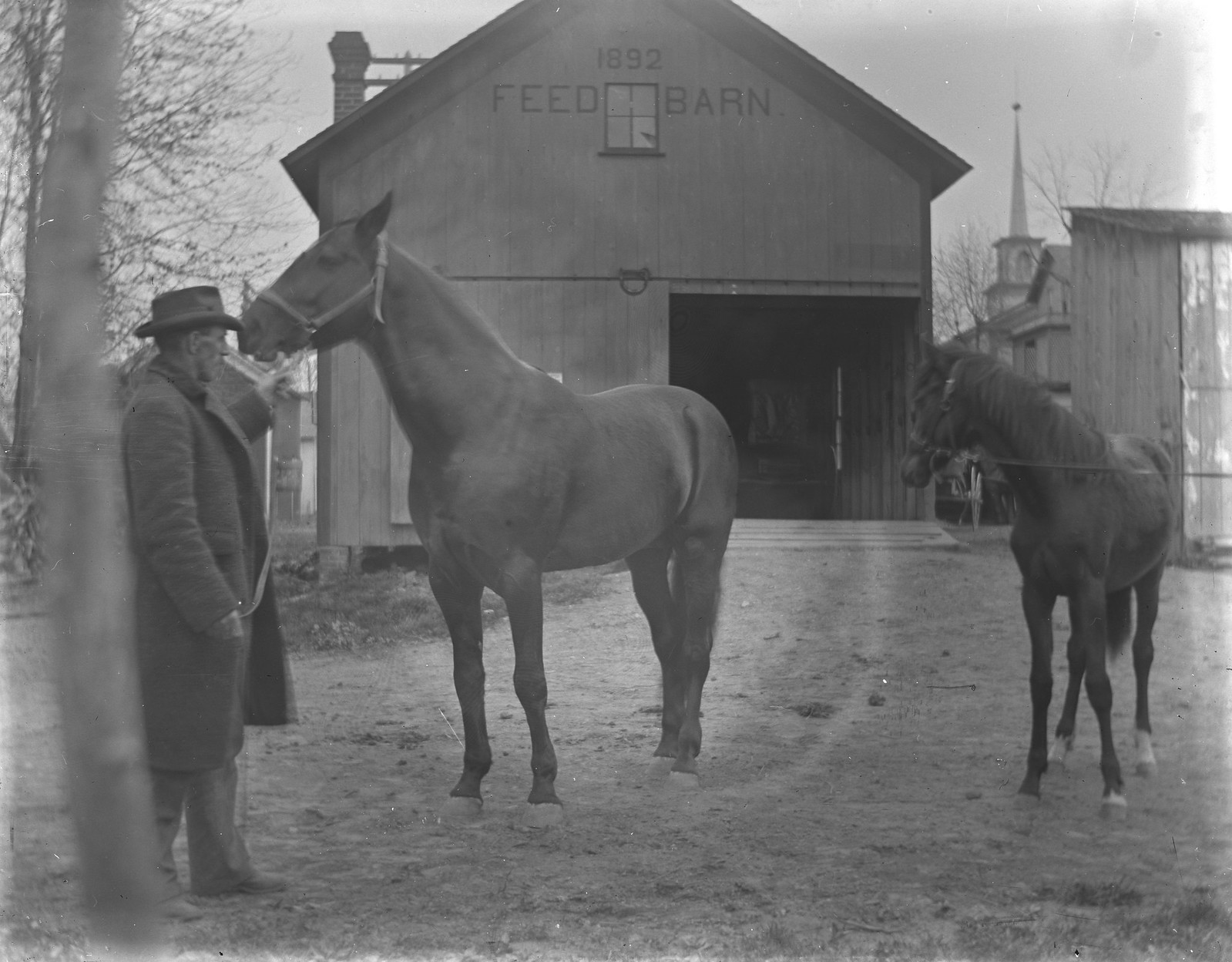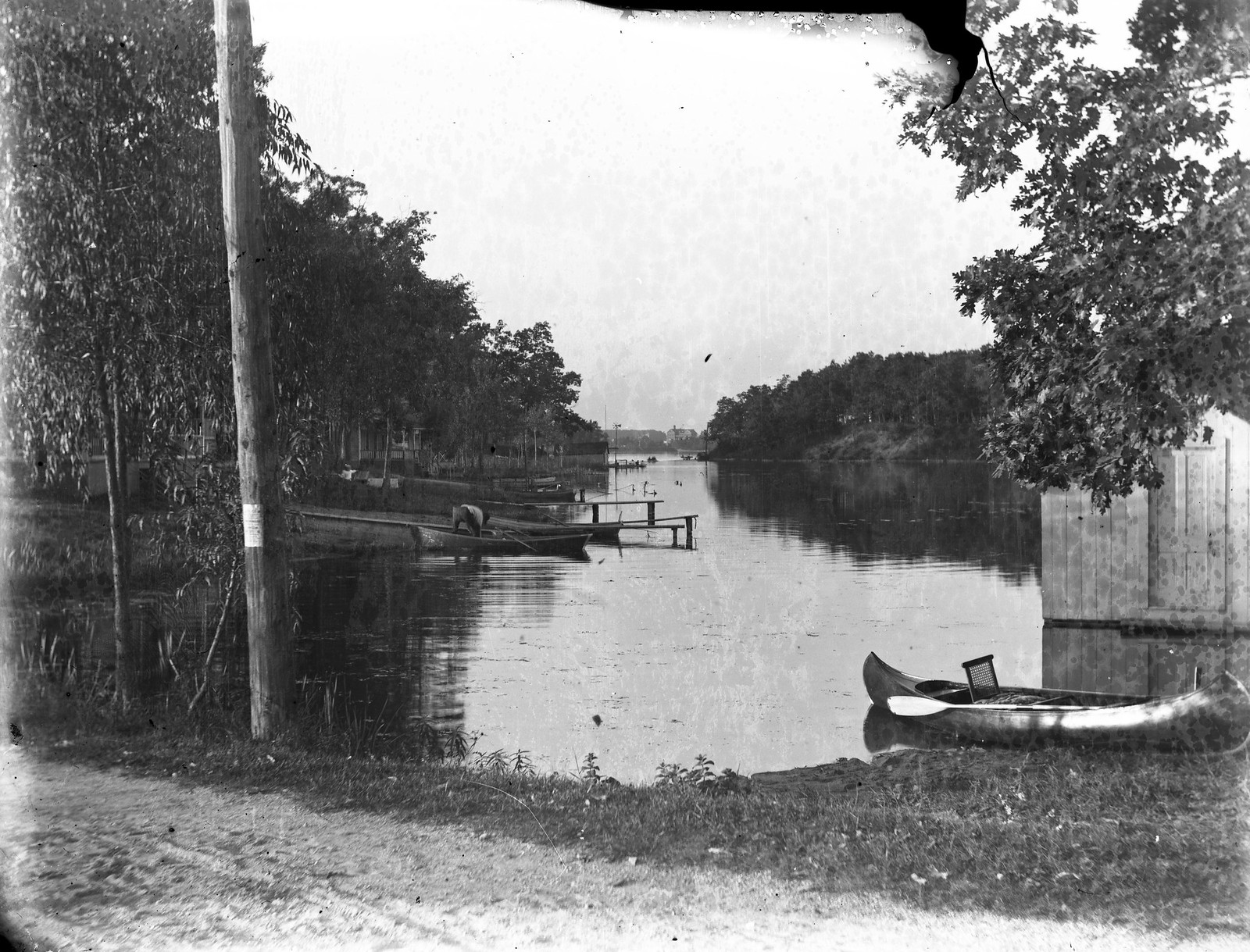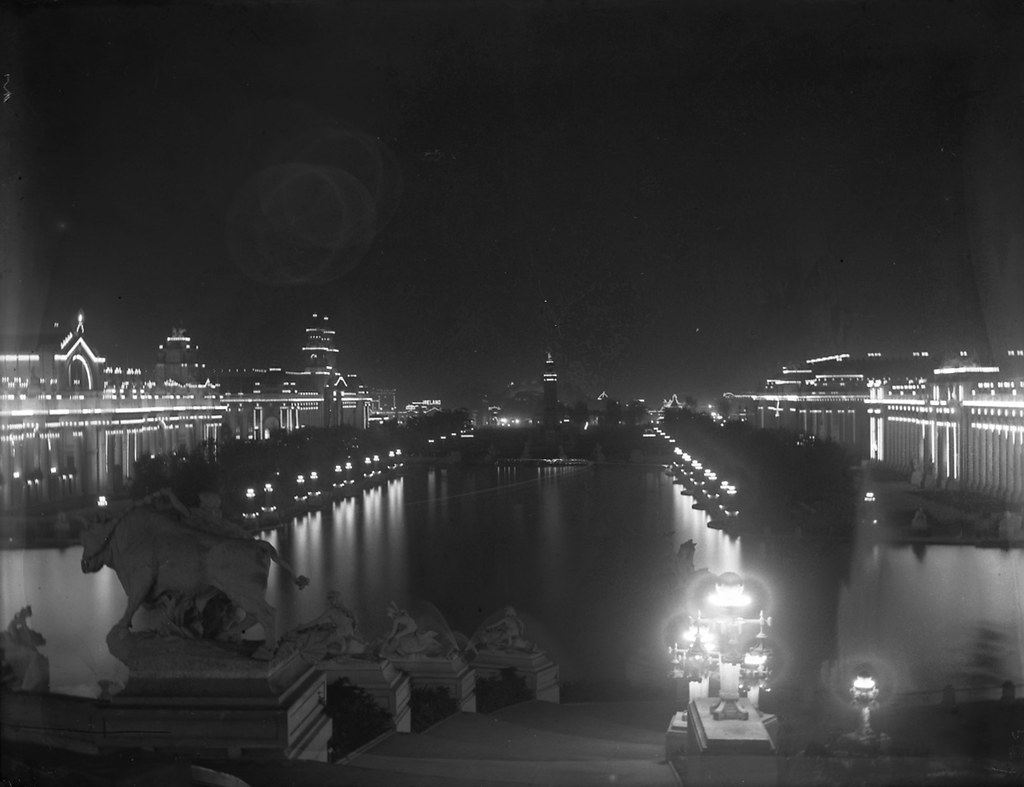|
|
Post by Inspeqtor on Feb 22, 2022 13:30:45 GMT
Interesting work being done in the next two pictures! In the first of these two, the tall apparatus is a well rig driven by a steam engine. You could hear those rigs for miles and anyone who had ever heard one once would recognize it again thirty years later, especially if they are driving through limestone. They don't so much drill the well; rather, it is driven, one clanging wham at a time. Thank you BuckSkin!! |
|
|
|
Post by Inspeqtor on Feb 22, 2022 13:33:02 GMT
These are all wonderful Inspeqtor , a real look back in time. Glad you are enjoying these BillieJean!! |
|
|
|
Post by Inspeqtor on Feb 23, 2022 15:19:29 GMT
More Photos Albert Took!  Scan 025-b Scan 025-b by inspeqtor, on Flickr This is a lovely church! Scan 028-a Scan 028-a by inspeqtor, on Flickr This photo here I really LOVE a LOT! I would think this one would have needed to be 'planned' ahead, Albert getting his camera set up and ready, then he tells the couple he is ready for them to ride past him. Scan 039-c Scan 039-c by inspeqtor, on Flickr  Scan 039-d Scan 039-d by inspeqtor, on Flickr  Scan 040-c Scan 040-c by inspeqtor, on Flickr  Scan 040-d Scan 040-d by inspeqtor, on Flickr  Scan 041-b Scan 041-b by inspeqtor, on Flickr  Scan 042-b Scan 042-b by inspeqtor, on Flickr  Scan 044-d Scan 044-d by inspeqtor, on Flickr  Scan 048-d Scan 048-d by inspeqtor, on Flickr Look across this small lake and see a man standing with another camera on a tripod.
Scan 053-e by inspeqtor, on Flickr 
Scan 054-e by inspeqtor, on Flickr  Scan 055-b Scan 055-b by inspeqtor, on Flickr  Scan 056-c Scan 056-c by inspeqtor, on Flickr  Scan 059-b Scan 059-b by inspeqtor, on Flickr |
|
|
|
Post by BuckSkin on Feb 24, 2022 1:12:19 GMT
Looking at the church steeple and belfry in the second photo and comparing them to the church in the background of the Feed Barn and horses photos, I believe it to be the same church. |
|
|
|
Post by Inspeqtor on Feb 24, 2022 4:30:59 GMT
Looking at the church steeple and belfry in the second photo and comparing them to the church in the background of the Feed Barn and horses photos, I believe it to be the same church. You seem to find things I do not see BuckSkin! Well done!! |
|
|
|
Post by BuckSkin on Feb 24, 2022 5:50:41 GMT
Regarding the picture under the two Feed Barn/horses pictures, they must be preparing to run a "city water" line. They have (very fragile) clay tile laid out, ready to be put in the ground. This type of tile, you stick the little end of the next tile in the belled end and pack it with Oakum(a tar impregnated hemp rope); then, you melt a huge amount of Lead and pour it into the belled end over the Oakum, hopefully making a water-tight joint. It is also possible that the tile is cast-iron instead of clay; almost as fragile and still assembled with Oakum and Lead. There was no flex or give to this type of piping; any transition in grade was made at the joint; the ditch had to be a lot more accurate than those of today as modern pipe is a lot more forgiving. I would be interested to know just how and what with they intend to dig the ditch for this line; maybe a steam shovel ? I doubt they had backhoes and ditch-witches way back then. I cannot figure out the bell-shaped affair suspended over the street; a Christmas decoration maybe ? There is a gathering of people in that vicinity. |
|
|
|
Post by BuckSkin on Feb 24, 2022 6:06:15 GMT
Notice the fancy Gliding Door track and hangers; I would assume quite rare for the time. Everyone around here calls them "Sliding Barn Doors"; but, they do not slide, they glide. I guarantee those hangers and track work a lot smoother and are much more reliable than those available today.  |
|
|
|
Post by Inspeqtor on Feb 24, 2022 14:54:12 GMT
I cannot figure out the bell-shaped affair suspended over the street; a Christmas decoration maybe ? There is a gathering of people in that vicinity. I was wondering/thinking perhaps that was a city street light? |
|
|
|
Post by BuckSkin on Feb 24, 2022 15:52:57 GMT
I cannot figure out the bell-shaped affair suspended over the street; a Christmas decoration maybe ? There is a gathering of people in that vicinity. I was wondering/thinking perhaps that was a city street light? It very well may be and the funnel shape would be the reflector. You can see two slack lines, either wire or rope, attached to it on it's left side. |
|
|
|
Post by Inspeqtor on Feb 24, 2022 17:08:46 GMT
Maybe this will help a bit? I think it is amazing how much we can zoom in on this OLD technology and the focus holds pretty decent! I zoomed in 400%!!  |
|
|
|
Post by Inspeqtor on Feb 25, 2022 21:00:13 GMT
I have had these glass negatives since the early 70's but back then there was no easy way that I knew of to do anything with them. In 2007 I bought an Epson Perfection 4990 Photo Scanner specifically for scanning these negatives. Oh how easy and simple this turned out to be. There are a number of film scanners you can buy today but all they will scan for the most part (to my limited knowledge) is scanning like 35mm negatives or slide film. The 4990 will scan any negatives up to 8 3/4 X 12 so quite large really! These negatives I have, as I mentioned before are (two sizes) 3 1/4 X 4 1/4 and also 4 X 5 plus the 4990 will do every day one sided scanning of papers or books. HERE is the 4990 that I purchased from Amazon in 2007. This scanner was also my very FIRST purchase from Amazon. Below are 2 pictures I just took of my scanner. Shown in the LID of the scanner is the reflective document mat (white screen). Remove the document mat so light will go THRU the negative in the 2nd photo. The 4990 is no longer available. If you type in Epson 4990 Scanner it will come up with the 4490 scanner.   This is what one of my typical scanned images looked like back then.  I then put multi-image into Photoshop Elements to separate the images into single images. I laid the glass plates flat on the scanner to scan them 4 or 5 at a time for the smaller 3 1/4 X 4 1/4 plates The 4X 5 plates I could only get 2 plates on the scanner table at a time. |
|
|
|
Post by Inspeqtor on Feb 25, 2022 21:23:49 GMT
Here is one image I missed showing from the 1893 Chicago World's Fair  Worlds Fair 02A Scan 029-d Worlds Fair 02A Scan 029-d by inspeqtor, on Flickr This building it turns out should have been with the Purdue Pictures.
 Building 01 Building 01 by inspeqtor, on Flickr When I zoomed in on the area above the main door it says: "West Lafayette Water Works 1883" - it is a bit hard to read. The rest of these images are images I have no idea where they were taken. The rest of these images are images I have no idea where they were taken. Building 03 Scan 048-a Building 03 Scan 048-a by inspeqtor, on Flickr  Building 04 Scan 049-b Building 04 Scan 049-b by inspeqtor, on Flickr  Building 05 Scan 053-a Building 05 Scan 053-a by inspeqtor, on Flickr  Building 06 Scan 054-d Building 06 Scan 054-d by inspeqtor, on Flickr  Building 07 Scan 055-e Building 07 Scan 055-e by inspeqtor, on Flickr  Building 08 Scan 056-b Building 08 Scan 056-b by inspeqtor, on Flickr How about someone here buying one of these lovely homes to refurbish it and bring it back to life?
Couple weeks work have it good as NEW again!! Building 09 Scan 056-e Building 09 Scan 056-e by inspeqtor, on Flickr  Building 10 Scan 057-d Building 10 Scan 057-d by inspeqtor, on Flickr  Building 11 Scan 058-a Building 11 Scan 058-a by inspeqtor, on Flickr  Building 12 Scan 058-b Building 12 Scan 058-b by inspeqtor, on Flickr  Building 13 Scan 058-c Building 13 Scan 058-c by inspeqtor, on Flickr  Building 14 Scan 059-d Building 14 Scan 059-d by inspeqtor, on Flickr  Building 16 Scan 060-a Building 16 Scan 060-a by inspeqtor, on Flickr  Building 17 Scan 060-b Building 17 Scan 060-b by inspeqtor, on Flickr |
|
|
|
Post by BuckSkin on Feb 25, 2022 22:28:33 GMT
Those last three are good examples of the practice of weatherboarding a log house to make it look more modern; and, more importantly, to cut out the cold drafts.
Over time, the logs would split and have big cracks in them where cold air could pour through; plus, the chinking would dry out and deteriorate.
Cover the log walls with tar paper and then add weatherboard over that and you get a good, tight, easy-to-heat house.
Cover the inside walls with eight or ten layers of newspapers and then plaster over that and nobody will ever know there is a log house hiding in there.
Own up now; how many of you have used flour-and-water paste and newspapers to tighten up a drafty old house ?
I have been in many a house where you could read the news and see the ads, although turned a bit yellow from the flour-and-water paste.
|
|
|
|
Post by Inspeqtor on Feb 26, 2022 3:11:51 GMT
Those last three are good examples of the practice of weatherboarding a log house to make it look more modern; and, more importantly, to cut out the cold drafts. Over time, the logs would split and have big cracks in them where cold air could pour through; plus, the chinking would dry out and deteriorate. Cover the log walls with tar paper and then add weatherboard over that and you get a good, tight, easy-to-heat house. Cover the inside walls with eight or ten layers of newspapers and then plaster over that and nobody will ever know there is a log house hiding in there. Own up now; how many of you have used flour-and-water paste and newspapers to tighten up a drafty old house ? I have been in many a house where you could read the news and see the ads, although turned a bit yellow from the flour-and-water paste. Of the last three, which of those would YOU like to buy to be able to renovate it and bring the life back to NEW again BuckSkin? I promise only a couple weeks work and you can move right in and make it your new HOME!! Of your question: I have NEVER done that! Have YOU done that? |
|
|
|
Post by BuckSkin on Feb 26, 2022 5:20:04 GMT
I have NEVER done that! Have YOU done that? I hate to admit my poverty upbringing; but, yes, I have wallpapered with newspapers and flour-and-water paste. The second from the bottom stands the squarest and has the best roof. |
|